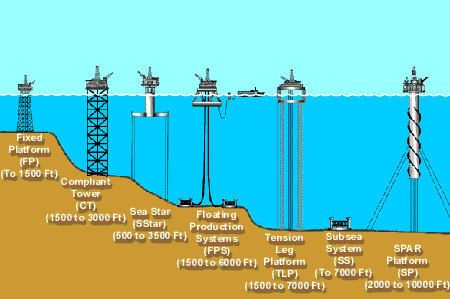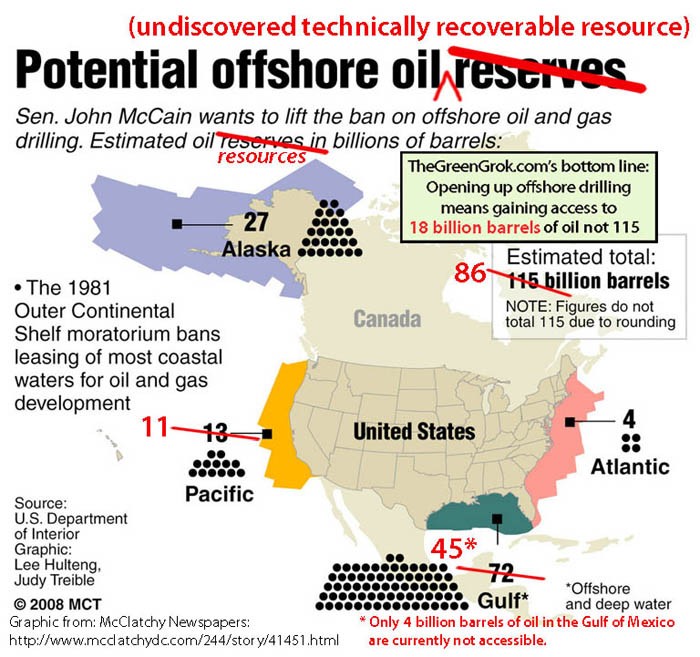
[Artwork by FREAKING NEWS]
NEW YORK TIMES: The Obama administration is proposing to open vast expanses of water along the Atlantic coastline, the eastern Gulf of Mexico and the north coast of Alaska to oil and natural gas drilling, much of it for the first time, officials said Tuesday. The proposal — a compromise that will please oil companies and domestic drilling advocates but anger some residents of affected states and many environmental organizations — would end a longstanding moratorium on oil exploration along the East Coast from the northern tip of Delaware to the central coast of Florida, covering 167 million acres of ocean.
Under the plan, the coastline from New Jersey northward would remain closed to all oil and gas activity. So would the Pacific Coast, from Mexico to the Canadian border. The environmentally sensitive Bristol Bay in southwestern Alaska would be protected and no drilling would be allowed under the plan,  officials said. But large tracts in the Chukchi Sea and Beaufort Sea in the Arctic Ocean north of Alaska — nearly 130 million acres — would be eligible for exploration and drilling after extensive studies. The proposal is to be announced by President Obama and Interior Secretary Ken Salazar at Andrews Air Force Base in Maryland on Wednesday, but administration officials agreed to preview the details on the condition that they not be identified. The proposal is intended to reduce dependence on oil imports, generate revenue from the sale of offshore leases and help win political support for comprehensive energy and climate legislation.
officials said. But large tracts in the Chukchi Sea and Beaufort Sea in the Arctic Ocean north of Alaska — nearly 130 million acres — would be eligible for exploration and drilling after extensive studies. The proposal is to be announced by President Obama and Interior Secretary Ken Salazar at Andrews Air Force Base in Maryland on Wednesday, but administration officials agreed to preview the details on the condition that they not be identified. The proposal is intended to reduce dependence on oil imports, generate revenue from the sale of offshore leases and help win political support for comprehensive energy and climate legislation.
But while Mr. Obama has staked out middle ground on other environmental matters — supporting nuclear power, for example — the sheer breadth of the offshore drilling decision will take some of his supporters aback. And it is no sure thing that it will win support for a climate bill from undecided senators close to the oil industry, like Lisa Murkowski, Republican of Alaska, or Mary L. Landrieu, Democrat of Louisiana. The Senate is expected to take up a climate bill in the next few weeks — the last chance to enact such legislation before midterm election concerns take over. Mr. Obama and his allies in the Senate have already made significant concessions on coal and nuclear power to try to win votes from Republicans and moderate Democrats. The new plan now grants one of the biggest items on the oil industry’s wish list — access to vast areas of the Outer Continental Shelf for drilling. MORE

GREEN GROK: With the cost of gas still near record highs and crude oil prices rising and falling like a ride at Six Flags, drilling for oil has been capturing imaginations and grabbing headlines. But caveat emptor: misinformation abounds. In one case a recent graphic by a respected news service painted a rosier picture of our nation’s resources than the facts would indicate. Take a look at the graphic. The black text shows the original as it appeared in newspapers; the text in red shows our corrections. The bottom line: lifting all bans on offshore drilling will make about an additional 18 (not 115) billion barrels available for drilling. The “115 billion barrels” number corresponds to the United States’ total endowment of technically recoverable offshore oil (see this Congressional report [pdf]). The operative word in this category is “endowment.” It includes both:
- an estimate of what is remaining in the ground (in terms of discovered resources and future finds) and
- the amount of oil we have already recovered and used (in oil-world jargon this is the cumulative production).
Since the debate is about how much oil we can get from opening up offshore fields for drilling, we clearly cannot count the oil we have already used — some 14 billion barrels. Subtracting that from 115 leaves us with 101 billion barrels. But there is another problem: the remaining 101 billion barrels include some 15 billion barrels of oil in fields that have already been discovered and to which oil companies already have access. If they already have access to them, those barrels clearly do not represent oil that can be gotten by opening new oil fields. When we subtract these 15 billion barrels, we are left with 86 billion barrels — the so-called undiscovered technically recoverable resource (UTRR). (See report [pdf].) The UTRR is the total undiscovered potential oil resources we think might be in the ground based on geologic knowledge and theory (see our glossary for more on UTRR). MORE
